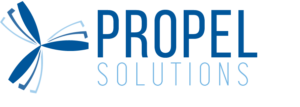The Challenge
Richmond Fire and Rescue (RFR) engaged Propel Solutions to assist with the implementation of a Preventative Maintenance Program and System. The goal of this engagement was to reduce the overall spend on equipment within the department through better tracking and maintenance practices of fleet vehicles that will extend the lifetime of the purchased assets.
To support this goal, Propel Solutions developed and implemented a comprehensive Preventative Maintenance Program for RFR that is compliant with the Commercial Vehicle Inspection Program (CVIP) and National Fire Protection Association (NFPA) standards. This program included the implementation of FASTER Fleet Management Software that had to be configured to meet the departments unique needs.
The Objectives
Propel Solutions was engaged to provide the overall project management, change management, system testing, configuration, process design, training, and related, implementation services to support the Municipality. The project included the following objectives:
- Greater standardization in RFR operations through the creation of a documented Fleet/Preventative Maintenance Program for all RFR vehicles;
- Compliance with the Commercial Vehicle Inspection Program (CVIP) and National Fire Protection Association (NFPA) Standards;
- Better tracking of inventory and maintenance processes which will reduce the overall spend on vehicle equipment and extend the lifetime of the purchased assets; and
- More informed decision-making through the use of Key Performance Indicators (KPI’s) and system reporting.
The Results
The Preventative Maintenance Program was developed and the FASTER Fleet Tracking system was launched within four (4) months. The successful implementation included all stakeholders engaging and contributing throughout the process. In addition, we ensured that the City of Richmond had a fully trained team that could administer and use the systems independently and successfully. Our comprehensive change management program accompanied our project management and systems implementation methodology which ensured 100% of user compliance from day one. The department was left with a fully documented “living” Program Document that could be used to train other users and demonstrate the department’s compliance.

